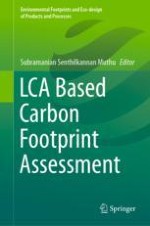2021 | OriginalPaper | Chapter
Toward a Low-Carbon Economy: The Clim’Foot Project Approach for the Organization’s Carbon Footprint
Authors : Simona Scalbi, Patrizia Buttol, Arianna Dominici Loprieno, Gioia Garavini, Erika Mancuso, Francesca Reale, Alessandra Zamagni
Published in: LCA Based Carbon Footprint Assessment
Publisher: Springer Singapore
Activate our intelligent search to find suitable subject content or patents.
Select sections of text to find matching patents with Artificial Intelligence. powered by
Select sections of text to find additional relevant content using AI-assisted search. powered by
